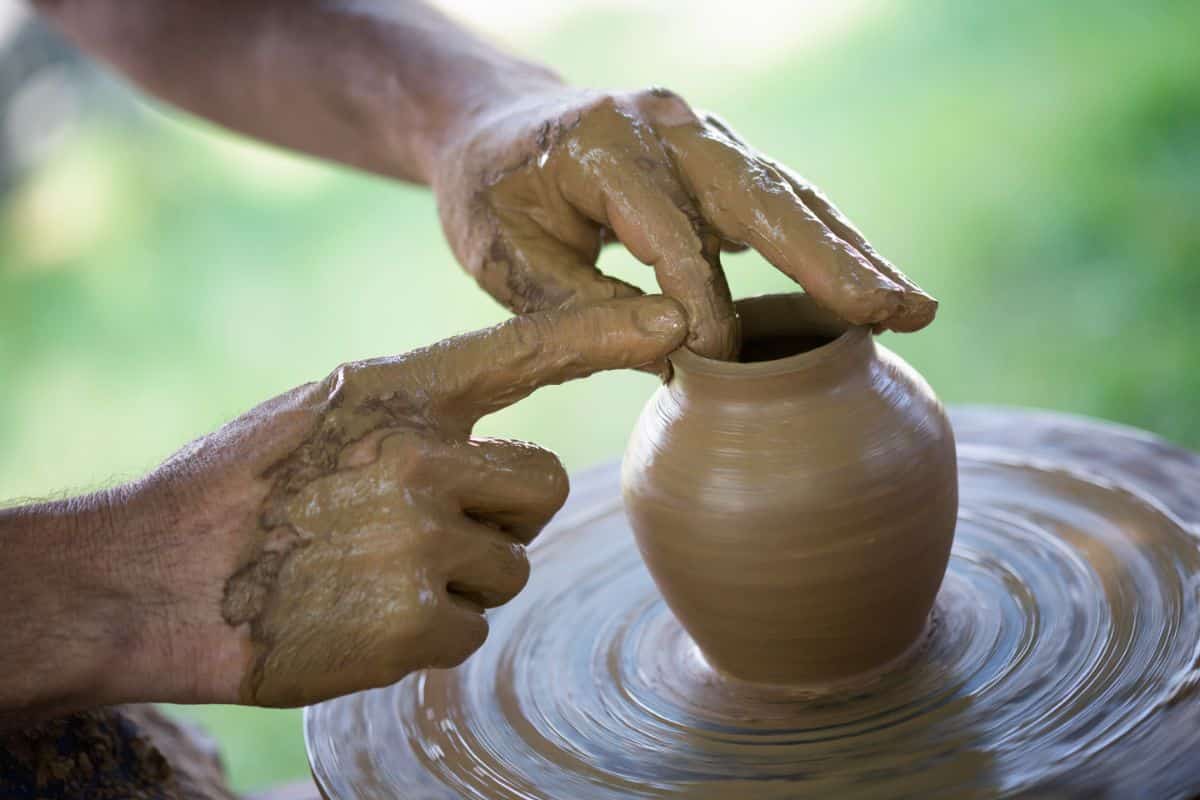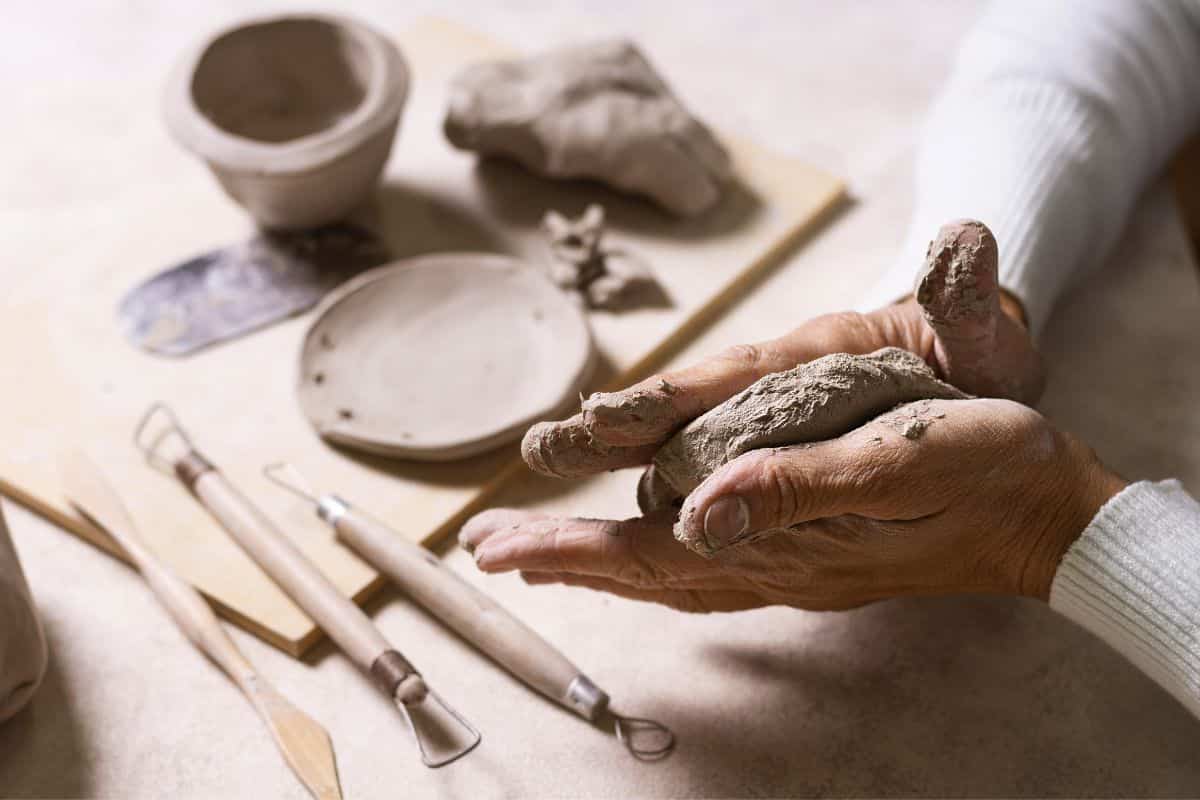As a beginner working with clay, it is important to make sure that you learn the right techniques to ensure that you are developing your skills to make strong and stable pieces.
Air-dry clay (ADC) is great to use as it is easy to work with and it doesn’t require the use of advanced equipment, like a kiln, but it still needs to be sealed.

Sealing air-dry clay is important as you need to make sure that you have a good base to work on. It will also keep your clay protected, so it is very important to make sure that you apply the sealant correctly, but how?
This article will explain how to seal air-dry clay so that it is high-quality and will allow your structures to look professional and long-lasting. You can find out more below to make sure that you seal the clay correctly.
How Should You Seal Air-Dry Clay?
There are various ways that you can seal ADC, but it must be done properly so that it protects your clay sculptures. You can find out more below about the different ways to seal ADC to make sure that it is done properly.
Use A Spray Sealant
The first way that you can seal ADC is to use a spray sealant. This is a very easy way to seal your clay and it works well on both large and small objects.
Before you use the sealant, you will need to make sure that the clay is dry and clean, so remove any dust or dirt.
Hold the sealant at least 6 inches from the clay and spray the whole sculpture evenly. The sealant must be evenly distributed to avoid any uneven patches. If you overspray the sealant, it can run, making the final product streaky.
Once you have finished spraying the sealant, you will need to let it fully dry before painting. Painting over wet clay will produce a messy finish on the surface, so make sure that the whole sculpture is dry before proceeding.
Use Mod Podge
Using a spray is not preferable for a lot of people, so if you would rather use a sealant that you can paint onto the clay, you can use Mod Podge.
It comes in different finishes for you to choose from, such as gloss, satin, and matte, so you can be completely happy with the finish of your sculpture.
Make sure that the surface of the clay is clean before applying as you do not want to paint over dust. This will affect the finish of the sealant and it will not be as smooth.
To use Mod Podge, you need to mix the sealant until it is smooth and easy to apply. Paint a thin coat onto the surface of the clay and wait for it to dry completely.
After the first coat has dried, apply another one if necessary. Make sure that the second coat has fully dried before you begin painting to avoid any messiness.
Use Acrylic Paint
Acrylic paint is a very durable sealant, so it is very popular for sealing ADC. It is best used on small clay sculptures as it can be very challenging to apply to large areas as the paint can be lumpy and uneven, not leaving a smooth finish.
Mix the acrylic paint so that it is smooth to apply to the clay. Paint a thin layer of acrylic paint over the clay and make sure that it is dry before you apply another one if you feel like it is necessary.
After you have painted 2-3 coats of acrylic paint over the clay, make sure that you leave the clay to fully dry for a minimum of 24 hours.
You should always leave the clay between 24-72 hours before touching it as you do not want to spoil the smooth surface.
Can You Make ADC Waterproof?
When you seal ADC, you make it waterproof to protect it from any water damage. If the clay is exposed to water, the structure can become weak and damaged, so making sure that it is sealed will keep it in good condition.
Although sealed ADC is protected, you still need to be aware that sealants are not as powerful as a glaze when it comes to protecting clay.
Mugs that are glazed and fired are protected from water as the glaze is strong, but sealants are not as tough. Although they protect the clay, it can be difficult to make the protection from liquids as long-lasting as a glaze.
Does The Clay Need To Be Dry Before Applying Sealant?
ADC needs to be completely dry before you apply a sealant as you need to make sure that the structure is strong enough to hold. If the clay is still wet when the sealant has been applied, the water molecules inside the clay will be unable to escape.
This will make the clay soft and unstable, which will not last long.
The normal period for drying ADC is between 24-48 hours, but it is best to leave the clay for 72 hours to ensure that it is fully dry. This will prevent any water from becoming trapped inside the clay and being unable to escape.
Your structure will be strong and sturdy as it will have had a chance to fully dry.
Final Thoughts
To conclude, there are different ways that you can seal ADC to make sure that it is protected and secure. You can use spray sealant, Mod Podge, or acrylic paint to seal the clay as you need to be comfortable with what you are using.
If you do not want to use a spray, painting sealant on the surface will be just as effective.
The clay needs to be completely dry before the sealant is applied as this will allow any water to evaporate.
Any water left inside the clay will cause the clay to become weak, so you should leave it for 72 hours to dry fully before applying the sealant to the surface.








